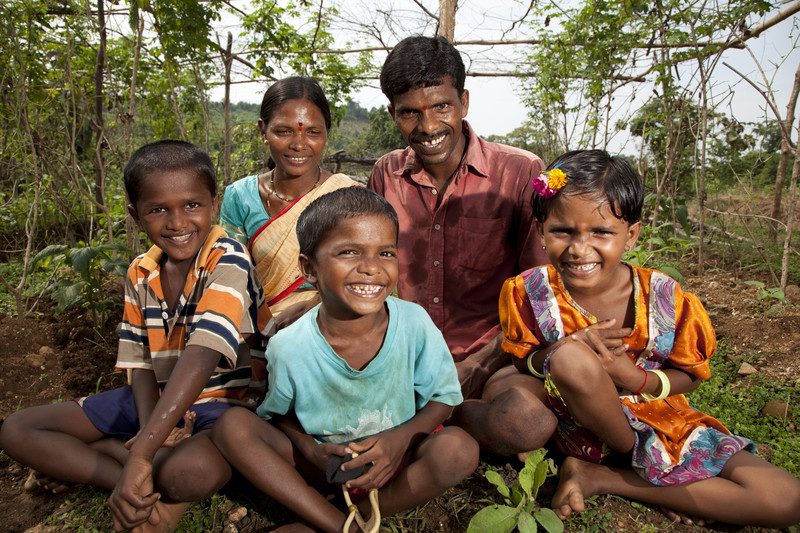
In our second story from India, we learn how life has turned around for 34-year-old Balram Gaurya Dore, his wife Seeta (30) and their three young children. Once cash-strapped agricultural labourers forced to move around depending where the work was, this young Katkari couple now earn a good livelihood cultivating vegetables on land they were able to secure with the help of Oxfam partner organisation, SAKAV.
Oxfam’s Chris Johnson met Balram and Seeta on a recent visit to their tiny village, Boricha-mal, in Maharashtra.
How long have you been growing vegetables here for?
Balram: Last four years we have started vegetable cultivation.
What were you doing before that?
Balram: We used to migrate out to the nearby towns and villages to work as agricultural labourers — so we could feed ourselves.
Can you tell me a little bit about what that was like – what were some of the challenges you faced?
Balram: It was a really very difficult situation for us … we never got sufficient clothes on our body, we could not feed our children properly, our children could not go to school and it was very difficult to live. During the monsoon we used to return to our village, do some cultivation [and] after that, again we would migrate to the nearby villages. So eight months [per year] we used to stay outside our village.
How did SAKAV help you?
Balram: When we used to come back here during monsoon, one of the SAKAV volunteers was in the village…He gave us information about SAKAV, and how it could help us … He advised us to visit, meet with staff, and get information about vegetable growing. So I went and discussed our problems with the officer and his team there.
Then after studying my case, they agreed to support me … for agriculture or vegetable cultivation … The first year, we had some income, but it was a very small quantity … we used to take [the vegetables] on our head and sell to the nearby villages. But in the last two years we’ve really started making very good income … Last year … we had a net profit of Rs 40,000 (about AUD $844). Now we have stopped migrating completely.
How did you come to own your land?
Balram: When this act came, the Forest Rights Act, SAKAV gave us information … [and advised us to] collect all the relevant documents, which they used in a claim for the forest land. So we collected all the paperwork and we gave it to SAKAV, and … then the government has given us this land. It took about two years to get this land in hand.
(NB: introduced in 2006, the Forest Rights Act allows Indigenous families like Balram and Seeta to claim and cultivate forest land if they can prove they’ve been cultivating it since December 2005. They can own up to 4 acres/1.6 hectares and have access to all non-timber produce as a source of income)
What are your hopes for the future, for your children and your family?
Balram: We want to educate our children; we want them to learn. We want them to work on our fields only: we do not want them to go outside and work somewhere else. And for that we want to make this land fully cultivatable … for better agricultural production. We want to put our children into agriculture school. So we want this land to be developed, and to educate our children so that they have a better future, and we have a better future in this village, on this farm itself.
Want to help poor rural families like Balram and Seeta improve their lives and provide for their children’s futures? Donate to our Harvest Appeal and you’ll be doing just that.
Read last week’s interview with Thakar couple Hira and Yashwant.